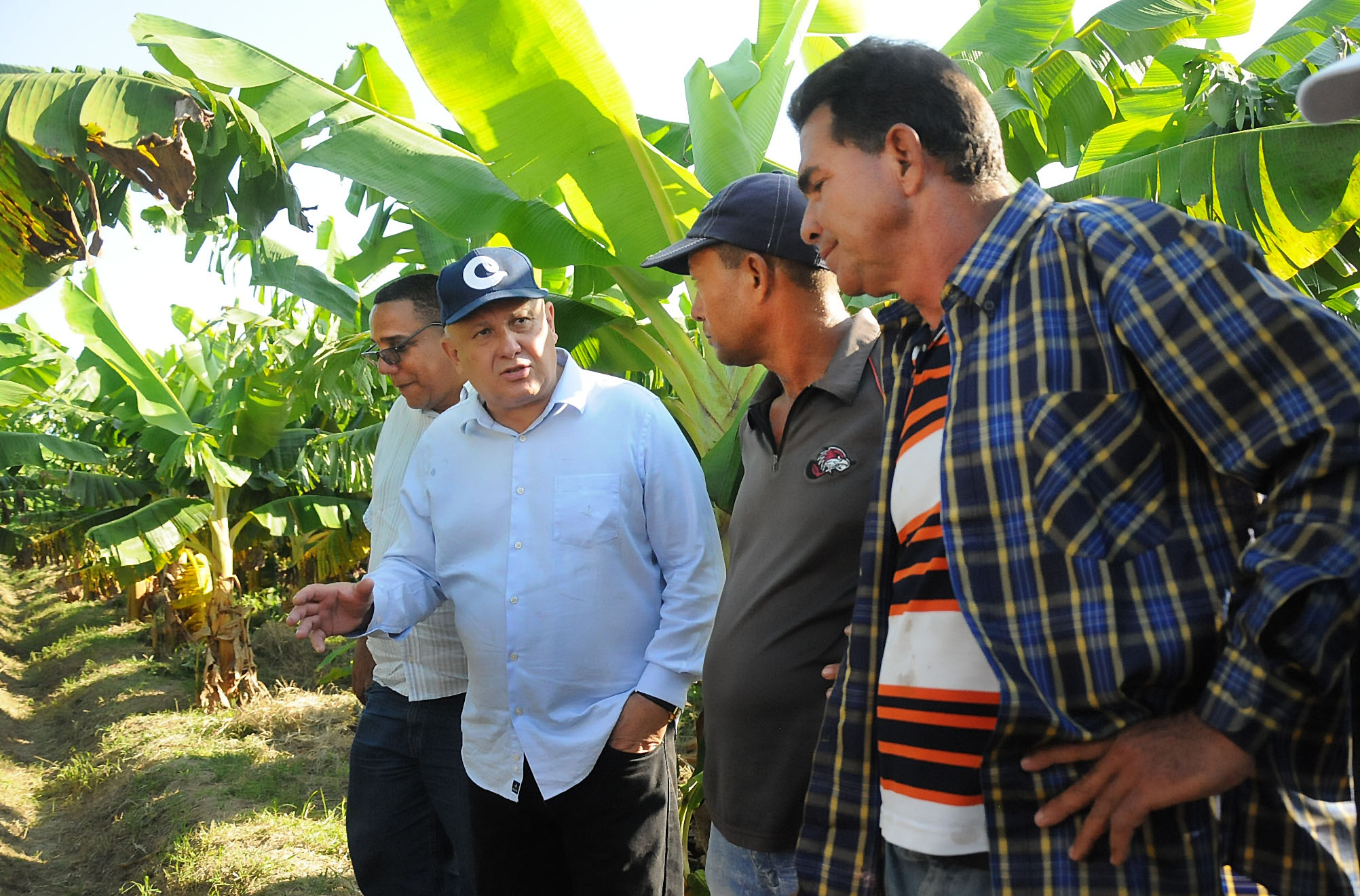 Guantanamo.- “Being clear about what must be done in each territory to raise food levels for the population; verifying, daily, the indicators that reflect agricultural production and meeting the goals set out in the Food Sovereignty and Nutritional Education Plan is a top priority for the country,” said Jorge Luis Tapia Fonseca, Deputy Prime Minister of the Republic of Cuba, in Guantánamo.
Guantanamo.- “Being clear about what must be done in each territory to raise food levels for the population; verifying, daily, the indicators that reflect agricultural production and meeting the goals set out in the Food Sovereignty and Nutritional Education Plan is a top priority for the country,” said Jorge Luis Tapia Fonseca, Deputy Prime Minister of the Republic of Cuba, in Guantánamo.
In a meeting with agricultural executives and other agencies and municipal mayors, Tapia Fonseca, accompanied by Idael Pérez Brito, Minister of Agriculture, and the province’s highest political and governmental authorities, reviewed programs for food production and those that are achieving municipal self-sufficiency.
Tapia Fonseca also checked investments in agriculture, the progress of the sugar harvest, the improvement of commerce and gastronomy, as well as the Turquino Plan.
The Deputy Prime Minister learned about the contracting and marketing processes for agricultural products, which average more than 51 pounds per capita in the province, and the progress of the current spring season, with the planting to date of more than 10,000 hectares of the 8,647 planned, of which approximately 9,888 are planted by the Ministry of Agriculture and 570 by the AZCUBA group, an organization dedicated to achieving better overall results in food production.
Although overall progress is being made in the cultivation of tubers vegetables, and grains, a deficit of approximately 1,308 hectares of cassava crops remains.
The commitments to deliver the remaining beans produced by the province’s farmers are not being met, and the municipalities of El Salvador, Guantánamo, Manuel Tames, and Yateras are failing to comply with the state-mandated collection plan.
The topics of monitoring and the destination of agricultural production in the municipalities were extensively discussed, as well as livestock control, to determine the actual number of animals owned by independent producers and the different production methods available, in order to boost livestock numbers.
“It is necessary,” the Deputy Prime Minister stated, “that those leading these processes understand the potential of the territories and understand clearly what the land is being used for? What is being planted in each People’s Council and district? How many forms of production exist and how many producers? And what is the strategy to increase food production?”
An assessment was also made of the territory’s results in urban, suburban, and family agriculture, the protein crop planting program, product marketing, production chains, agricultural extension and payment systems, and the search for incentives to stimulate producers.
During the day, Tapia Fonseca toured the Arroyo Hondo area of the municipality of Guantánamo, where he spoke with producer Miguel Hurgado and young cattle rancher Yusdelis Esterling.
He also visited La Jabilla, where he observed the results of farmer Antonio “Tony” Márquez in the popular and sorbo rice program. from the extra-dense plantain cultivation of Pedro Manuel Dorado “Chichito” and the goat and rabbit module of Yunesky Dupuy Aguilar, an example of a peasant woman that Tapia Fonseca called to “generalize and turn into a movement of empowered women in the agricultural sector in the region.”